Bacteria are constantly at war. Either they are attacked by other bacteria, or by other microbes like viruses.
For a virus to survive, it needs another living organism. Viruses infect any organism that has its own metabolism: animals, humans, fungi or even bacteria.
But none of these organisms likes being infected by a virus. It makes them sick.
Therefore, each organism developed its own way to fight off viruses. For example, you have your immune system that is trying to protect you from bad viruses.
And so do bacteria.
The bacterial immune system is not as complex and sophisticated as ours. But still, bacteria developed several mechanisms to fight off viruses and protect the community.
Here, we will look at the different ways of how bacteria become immune to viruses.
How a virus infects a bacterium
First, let’s have a look at how a virus infects a bacterium and reproduces.
Most viruses can only infect one specific bacterium. This is because each bacterium has a slightly different coat around its cell. And viruses recognise specific components on the outside of these coats.
When a virus binds to such a specific component on the bacterium, it cuts a little hole into the coat. Now, the virus can inject its genome through the hole into the bacterium.
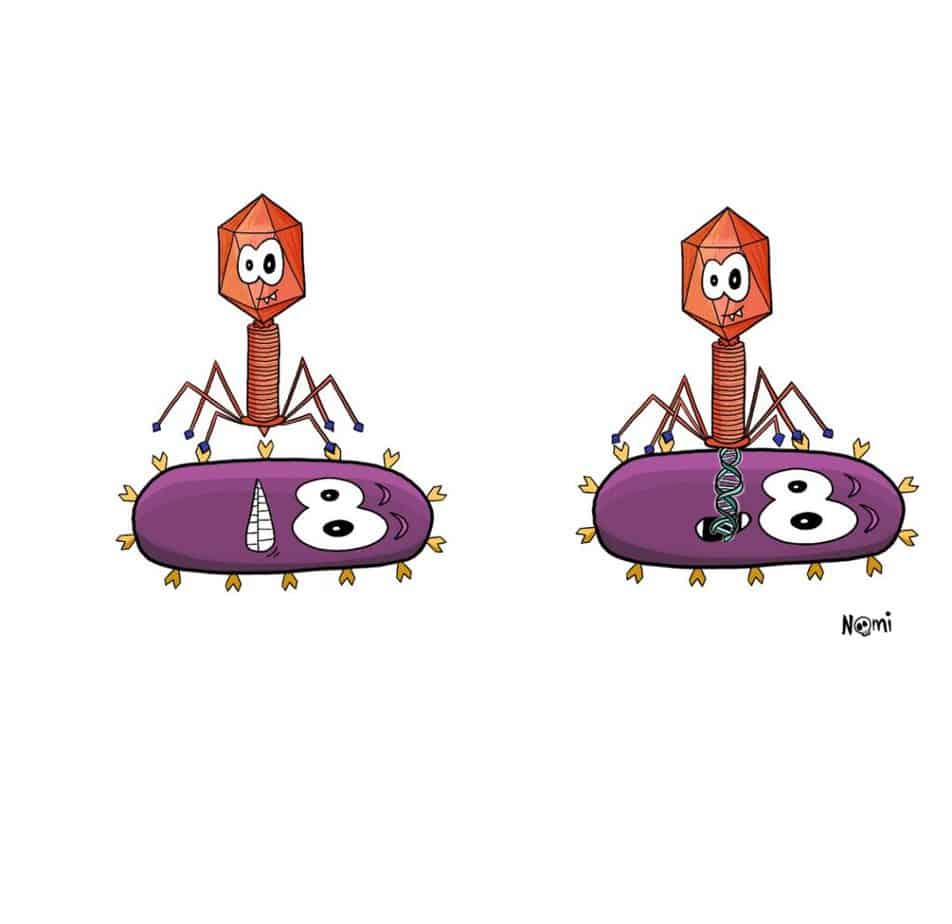
The bacterium recognises the genome and starts producing virus particles from the viral genome.
After the bacterium produced many virus particles and they assembled into full viruses, the bacterium bursts and dies. This releases the produced viruses from the bacterium. The viruses now spread and infect other bacteria and the cycle begins again.
How bacteria fight off viruses
Each infected bacterium is a risk to the whole bacterial community. An infected bacterium produces many viruses that can infect many more bacteria in a community.
This is why, bacteria developed several ways to defend themselves against viruses. And many bacteria use different modes of defence against viral attacks.
So, what does a bacterium do to defend itself against viruses?
Preventing the virus from binding
The first line of defence against a viral intruder is to prevent a virus from binding to the coat of the bacterium.
A virus recognises and binds to a specific component on the coat of the bacterium. So, a bacterium can mutate this component and change it to prevent the virus from binding.
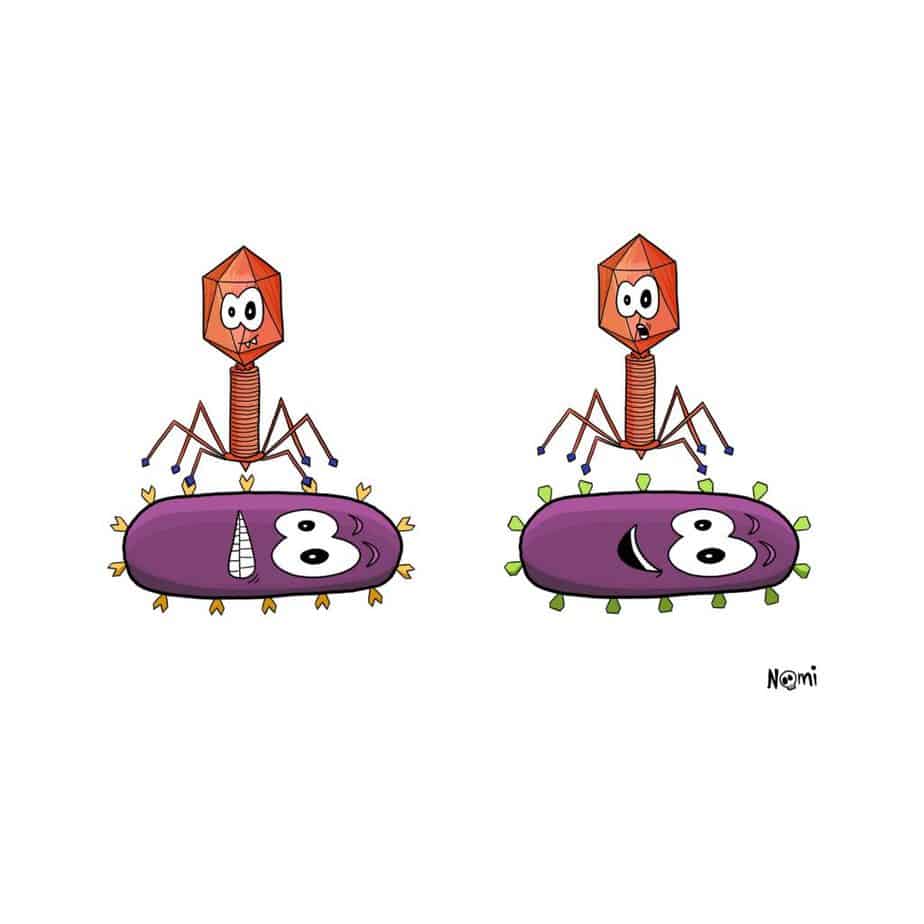
Another option is for the bacterium to produce biofilm. Biofilm is a slime that covers the bacterium and all its bacterial friends and protects them from harmful components like antibiotics, chemicals and viruses.
Sending out bacterial decoys
A really smart way of bacteria is to mislead viruses. Bacteria can produce bubbles from their coats that still contain the specific components that viruses bind to.
A virus can bind to these specific components and infect the bubbles. But the bubbles do not contain machines to produce viruses. Therefore, the bacterium does not get infected and will not produce any viruses.
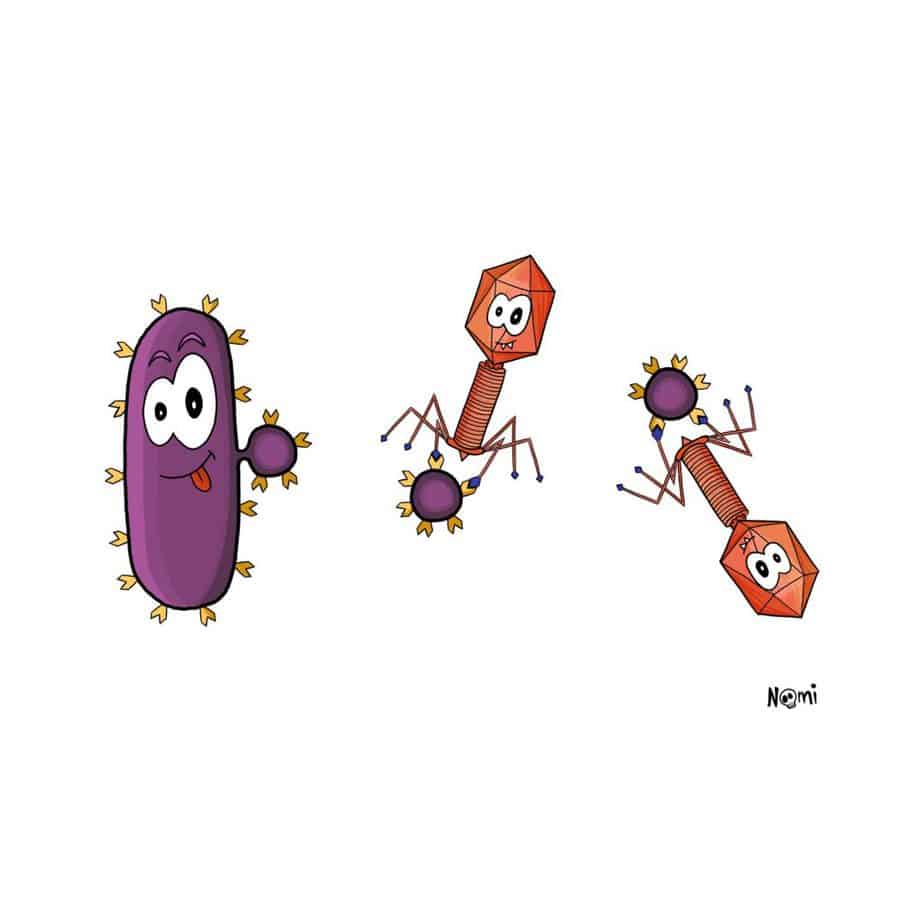
Smart bacteria!
Destroying what is coming in
After a virus attached to a bacterium, the actual infection starts when a virus injects its genome into the bacterium. This can be DNA or RNA.
Some of our little bacterial friends developed smart devices to recognise any DNA or RNA that does not belong to the bacteria. When a bacterium “sees” viral DNA or RNA inside the cell, it activates huge destruction machineries. These work like scissors and cut viral DNA or RNA into tiny pieces to make them non-functional. Now, the bacterium will not even start producing viral components.
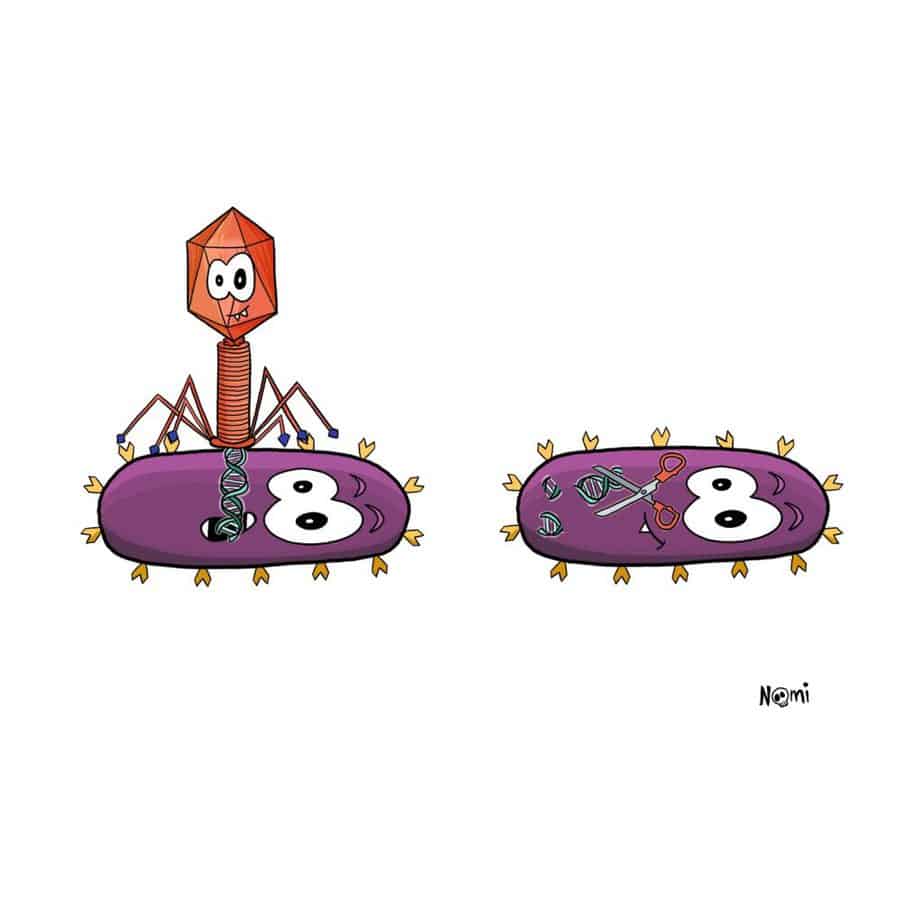
Many bacteria have different kinds of anti-viral scissors. And each one machinery recognises and cuts one specific piece of viral DNA or RNA.
The interesting thing is that bacteria use these scissors also to learn to fight new viruses. With the so-called CRISPR-Cas system, a bacterium learns to recognise new pieces of viral DNA or RNA when it first “sees” it. The next time the bacterium is infected with that same virus, it already knows how to fight it.
This is similar to how our body learns to fight a virus after we gave it a vaccine. We show our bodies what a certain virus looks like and it can develop the right weapons against it. The next time this virus attacks our body, we already have powerful weapons to fight the intruding virus.
Inhibiting the viral genome
If a virus was indeed successful and injected its DNA or RNA into a bacterium, some bacteria can still handle this. In this case, the bacterium produces specific molecules that bind to the viral DNA and prevent it from functioning properly.
This prevents the bacterium from producing viral components from the viral genome.
If nothing else works there is still one way out
Imagine, a virus was indeed lucky and managed to inject its DNA or RNA into a bacterium. And then imagine, the bacterium did not destroy the viral DNA or RNA and it produced viral components.
Now, the bacterium needs to prevent that these particles assemble into full viruses so that it does not kill the bacterium and spread into the surrounding.
In this case, bacteria have one last line of defence. And this defence mechanism is a truly altruistic weapon: Kill itself to protect the others.
Yes, an infected bacterium is prepared to sacrifice itself so that the whole community survives.
Just before virus particles assemble to full viruses, a bacterium can activate a suicidal mechanism. Like this, no full viruses will be released into the surrounding. No other bacteria will get infected with this virus. Everyone is safe.
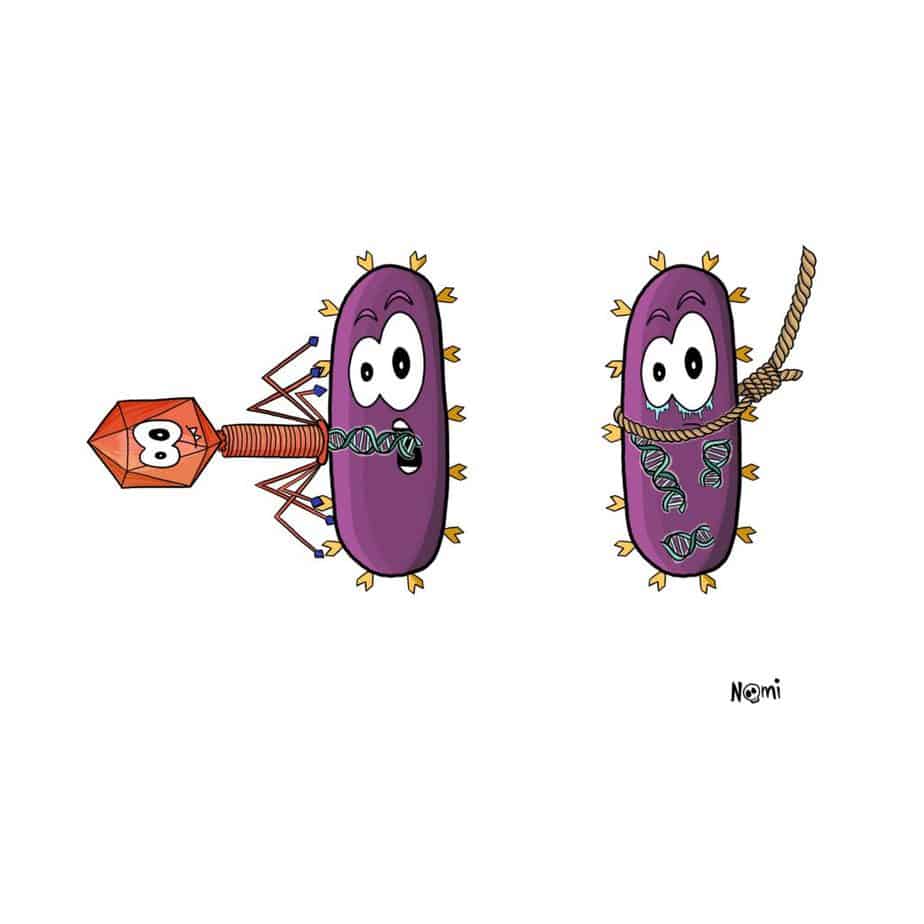
Because bacterial suicide is such a drastic mechanism, bacteria only activate it after all other defence mechanisms failed.
Multiple lines of defence to protect the whole community
As you can see, bacteria developed several ways to protect themselves from viral attacks.
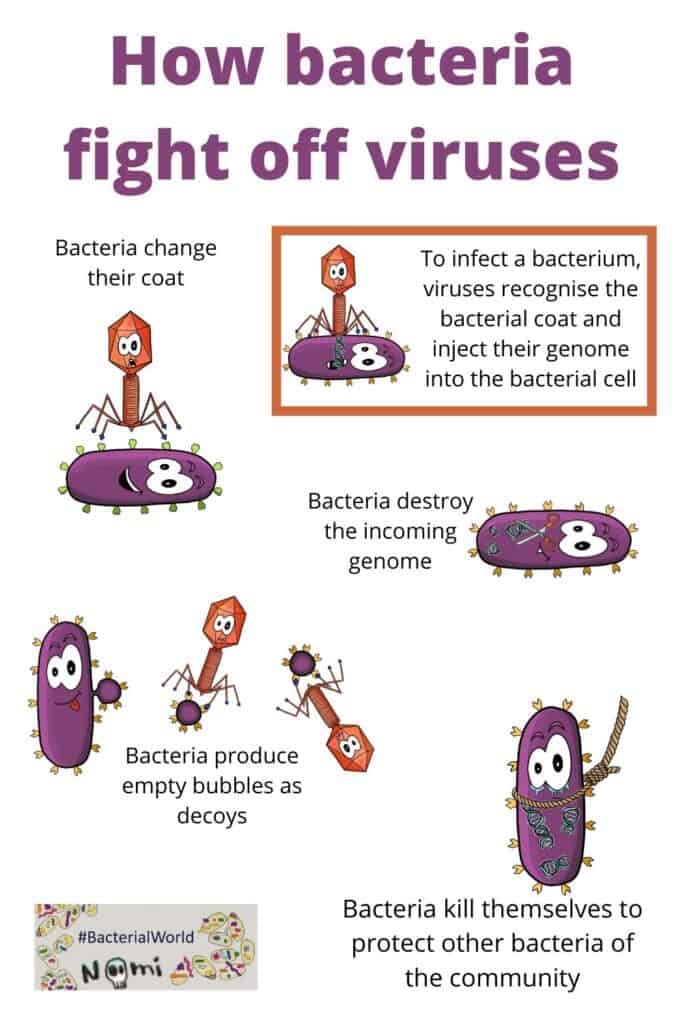
Don’t forget that also viruses mutate and can become resistant to any of these mechanisms. So it is a constant microscopic war between all the different microbial players.
Interestingly, not one bacterium has all the described mechanisms and is perfectly protected. But each bacterium has a few of these anti-viral weapons. Therefore, by working together, the whole bacterial community knows how to fight off most viruses. This teamwork can indeed protect the whole community.
How much we can learn from our microbial friends about how to fight off nasty viruses :)

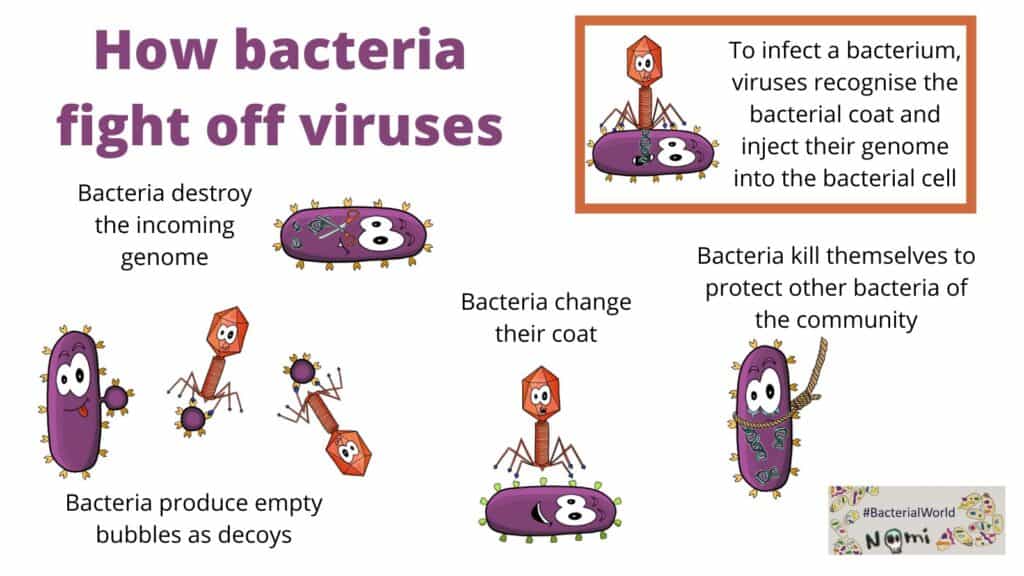
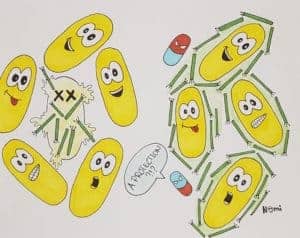
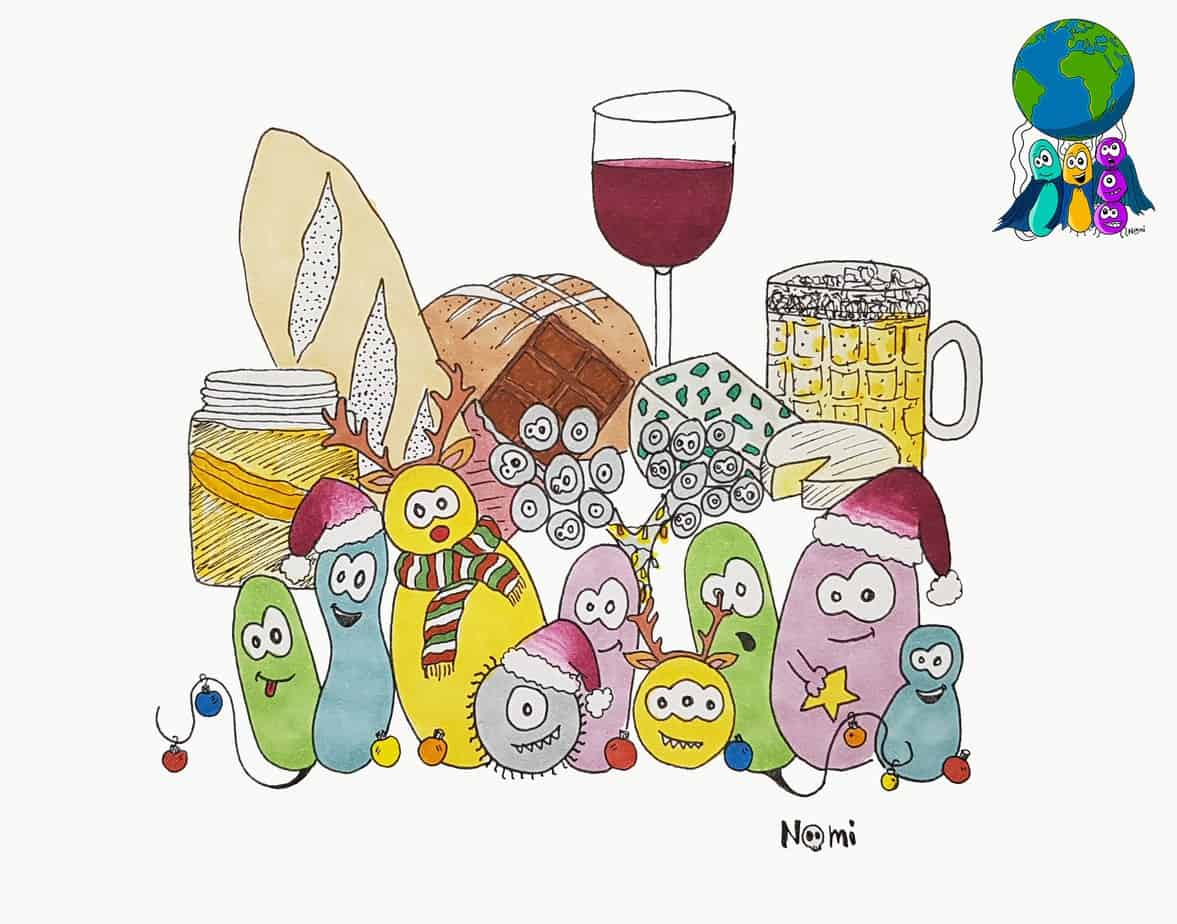





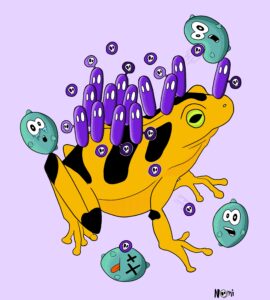

2 Responses
I’m always learning. This is excellent!
Thank you! Really glad you like it!